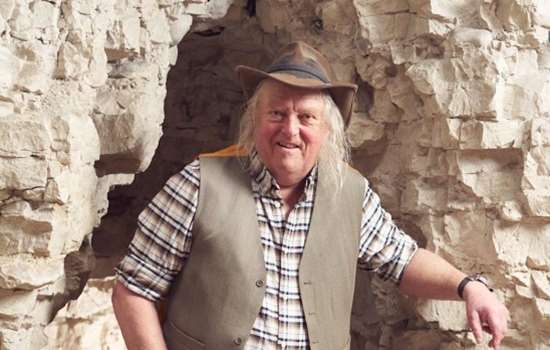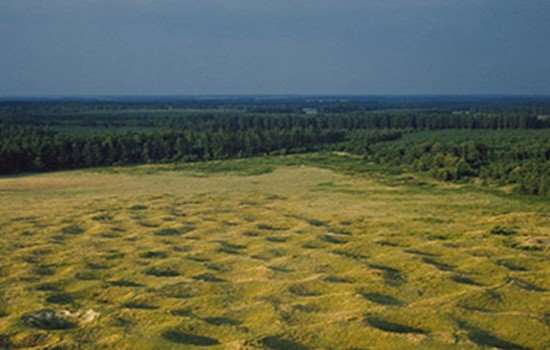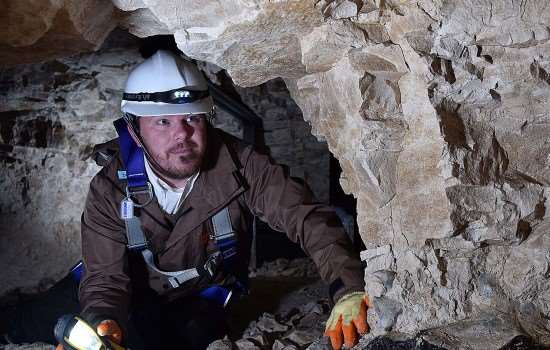Neolithic Religion
While we cannot be sure of the exact religious beliefs of Neolithic people, the monuments and artefacts that survive from this period provide some evidence of religious practices. In the early Neolithic, about 6,000 years ago, monumental tombs were built, often with impressive frontages and architectural features that may have stood out in the landscape. As robust and enduring monuments, these tombs may also have been territorial markers: the physical representation of an ancestral and communal connection within the landscape.
Around 5,000 years ago, during the late Neolithic, there is evidence of long-distance connections between different communities across Britain and Ireland. This is seen through a new style of art that emerged at this time and the associated religious beliefs. Spirals, circles and geometric patterns were applied to tomb walls, the interiors of houses, rock outcrops and objects. Natural or figurative representations were rare, but the imagery often echoed nature.
This new, shared art coincided with a flourishing of monument building at Stonehenge and across Britain and Ireland, at locations important to early farmers. The architecture and imagery of such centres drew together large numbers of people in works of collaboration and creativity in stone. While many of the monuments from the early and middle Neolithic seem to have involved the burial of the dead, the builders of the late Neolithic monuments seem to have been more concerned with bringing people together in the act of construction, often on an epic scale.
Deeper Underground
Grime’s Graves and Breckland, the landscape region in which Grime’s Graves lies, is known as ‘flint country’. The quality of the flint here has made the area a centre for flint mining throughout history.
While plenty of flint could have been found at the surface of the site, the third layer of flint at Grime’s Graves – known as ‘floorstone’ – was highly valued in prehistory for its excellent quality and glossy black colour. The surface flint was perfectly adequate for most practical purposes and did not involve digging at potentially dangerous depths. So why did the miners do it?
At this time, special materials were acquired from hard-to-reach locations in the landscape, such as the top of mountains or deep in the earth. Often these special stones had notable colour and texture that would have made them distinctive from everyday materials, and they may have had additional cultural value coming from these significant places in the landscape.
At Grime’s Graves, there may have been a specific set of beliefs connected to digging into the underworld. Ethnographic evidence from both modern and historical mining societies has shown that mining can often be symbolically charged, with ceremonies taking place before and after, suggesting a ritualised process of extraction.
Evidence from Grime’s Graves – carvings on mine shaft walls, ritualised extraction by tools left on site, tool caches, placed deposits, hearths and food remains – all indicate that rituals were also happening around the mining process here. Many of these deposits were similar in composition to those placed at other sacred sites, such as henges and stone circles, during the late Neolithic. There is a possibility that Grime’s Graves may have served as a type of ‘inverted monument’ within the surrounding region.
Many of the objects made out of the floorstone flint at Grime’s Graves were of specialist or prestigious tool types, such as discoidal (rounded) knives, indicating specialised knowledge of the mining and object-making process. Some floorstone axes, for example, were never actually used, and were often buried in hoards, pointing to a ceremonial rather than a functional purpose. Some have also been found many miles away, indicating that Grime’s Graves flint was also exchanged or traded and was therefore of value.
Sacred Rituals
As the miners dug deep into the ground, they left behind intriguing objects in the mines. Some objects suggest that offerings or closing ceremonies were performed as part of the mining process. Chalk platforms resembling altars were found, displaying arrangements of pottery and antler picks. Two highly decorated pots had been placed on one such platform at the base of a shaft, and in another pit seven antler picks were found on a platform. Many mines contained carved balls, chalk cups, phalluses and other objects, which would not have served any practical purpose.
Even after mining in individual shafts was completed, the shafts remained a focus for special activities. There is evidence of fires being lit and hearths on the floors of many, which had not been used for lighting or cooking. They may have been the basis of purification or closing ceremonies.
A mysterious object that was discovered in one of the pits at Grime’s Graves is known as the ‘Chalk Goddess’. While her origin is a bit of a mystery (and her authenticity has been disputed), she was discovered among a group of ritual objects in a pit that is known to have been less productive than others. It is possible that the Neolithic miners placed the objects there as part of a ritualistic process to ask the mine for a more successful seam of flint.
Read more about the Chalk Goddess
In another pit, an axe made from Cornish greenstone was found lying on a gallery floor, carefully positioned beside two antler picks, which lay parallel to each other with their tines facing inwards. Between them lay the skull of a phalarope, a rare shorebird. Neither the skull nor the axe were everyday objects and both had clearly come from some distance away. This was no casually discarded group of finds: it must have been deliberately arranged for some ritualistic purpose when the miners abandoned the gallery, having exhausted its flint.
As the mines were backfilled, offerings of animal – and occasionally even human – remains were made. In one pit a complete skeleton of a dog had been carefully buried. As with the Chalk Goddess and other ritual objects that have been found at Grime’s Graves, we can only guess at what the purpose of these remains was, but it is possible that such offerings were presented in the hope of ensuring a plentiful supply of flint in the future.
Written by Jennifer Wexler and Peter Topping
Explore More
-

Grimes Graves Audio Guide
In this audio tour of the site archaeologist Phil Harding and English Heritage historian Dr Jennifer Wexler explore the lunar-like landscape of Grime’s Graves.
-

History of Grime’s Graves
Read more about the history of Grime’s Graves, which has seen hundreds of years of activity by Neolithic flint miners.
-

Collection Discoveries
Discover some of the objects found at Grime’s Graves including a range of skilfully worked (or ‘knapped’) tools, demonstrating the many uses and importance of flint during prehistory.
-

Virtual Tour
Explore this 360° virtual tour of Greenwell’s Pit, the oldest, deepest and best-preserved pit excavated so far at at Grime’s Graves.
